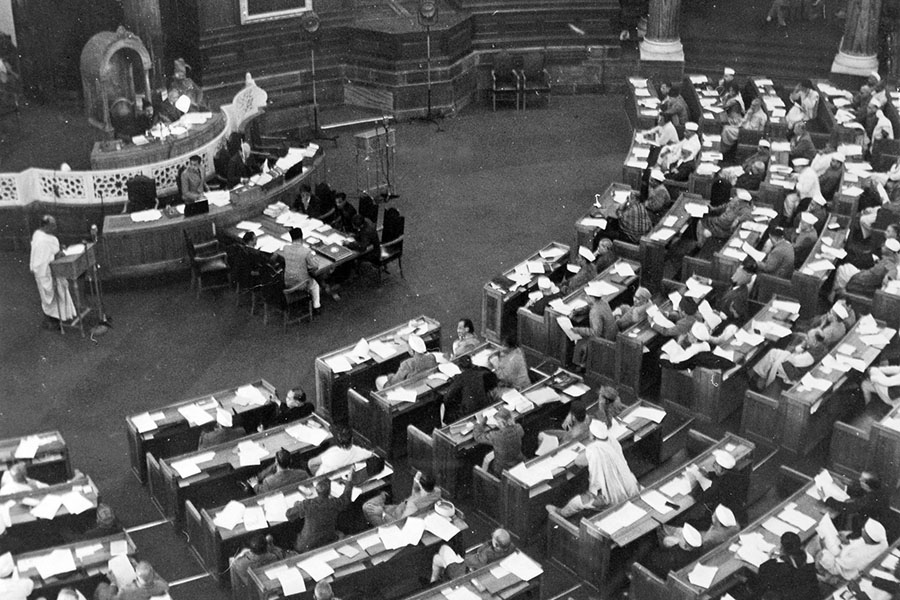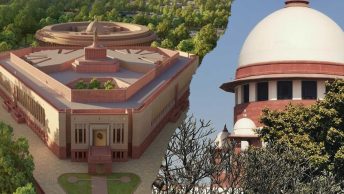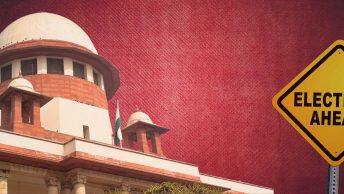Introduction
The members of the Constituent Assembly of India envisaged the Indian Constitution as a ‘liberal document’. Ironically, the liberal writers of the past, dominant among those, John Stuart Mill, were averse to this extension of freedom to colonial subjects. Indian nationalists soon realized that oppression by liberalism can only be countered through adoption of liberalism as a universal truth. This shaped the defining structures of the Indian state which was a “successor to both the British colonial state and the movement of Indian Nationalism”. The constituent assembly carried over this baggage, along with lived experiences of rule under a constrained Westminster system and formed an order and a political culture constituting a typology of its own. Harsha Kumarasingham has called this the ‘Eastminster’ system. Paradoxically, the post-colonial state decided to ‘confine’ itself to the framework established by the British under the Government of India Act, 1935. This ‘confinement’ puzzled many scholars and the development of this system came to be described as “the trained servants of Imperialism”. This poses a conundrum, a tug-of-war between the Eastminster on one side and the imperialist shadow of the colonial past on the other.
This blog explores whether such a conundrum did exist at the time of the formation of the Indian Constitution. I explore this by analyzing the constituent assembly debates to understand the post-colonial structure of the Indian polity. This analysis is scrutinized through the lens of different scholars like Granville Austin and Arun Thiruvengadam who have deliberated on the unique formation of the Indian Executive. Through this, the distinguishing features of the Indian and the British Executive are segregated to sieve through the impact of the latter on the ‘Eastminster’ system. The results so obtained are then understood in light of India’s colonial past to further the idea of a “negative” colonial adaption. Finally, an attempt is made to understand the ‘successes’ of these new institutions using the constitutional situation in Jammu & Kashmir.
This post is divided into four sections. Section I deals with the intersection of three ideologies and state of affairs, i.e., The British Monarchial Head; The Indian President and The Fraud on Kashmir. Through this intersection, a ‘fraudulent triangle’ consisting of the President, the legislature and the executive is unearthed following the abrogation of Article 370 of the Indian Constitution. This is viewed in light of the increase in discretionary powers of the President who came to be appointed through a process of indirect elections in which the majority of voters remained the members of the party at the Centre. Section II deals with the judicial developments in the context of amendments to be made to the J&K constitution by the Centre. These started the momentum for the conspiracy among the President, Executive and the Legislature which eventually conspires in 2019. Section III deals directly with the adoption of the modified form of parliamentary government where the Executive and its purported accountability to the Legislature is analyzed through the constituent assembly debates. Section IV summarizes the fraudulent triangle proposed in Section I to conclude with the fraud on the Indian Constitution.
Section I: The Fraudulent Triangle: The Legislature, The Executive and the President
India was to have a President as the constitutional head of the state, in a modified version of the British Monarch. This position was to be filled through a process of indirect election. B.N. Rau, who had drafted the initial version of the Constitution, aimed to create “a Powerful Presidency” with wide discretionary powers. The focus was on the creation of a goalkeeper who stood as a bulwark between the Prime Minister’s Cabinet and the social aims of the constitution. The social aims varied from separation between the Executive and the Judiciary through biased appointments, financial stability of the country and preventing majoritarian action.
While this vision of Rau did not find support, these aims came to be highlighted in the form of a comparatively diluted system of titular constitutional powers. Rau’s justification was rooted in lived experiences of the colonial past, where he had argued vehemently against discretionary powers of a Governor-General.
Rau was appointed as the OSD to the Reforms Office in the implementation of the 1935 Act. While the British government viewed the act as a piece of legislation, Rau thought of it as a constitutional document and understood the far-reaching implications the act could have in the Indian constitutional sphere. He argued against the unfettered powers of the Governor General and wanted to codify them exhaustively (Norms and Politics: 46).
He came to realize their importance of the importance of the constitutional head to be a powerful bulwark to be established under the new system primarily due to the failure of the role of the Governor-General. The role of the President as it came to be was because of Rau’s vision for the Presidential authority to act as a bulwark against riots, majoritarianism and financial instability rooted in Indian history which the Governor General failed to adopt.
Unfortunately, due to lack of procedural safeguards, certain discretionary powers under this system came to be used to subvert the text of the constitution. Unique to India’s Quasi-federal structure, Article 356 allows the President to declare an emergency when the President is satisfied that there is a failure of the constitutional machinery of the State. Facing opposition in the Constituent Assembly against the said article, Dr. B.R. Ambedkar emphasized that the federal nature of the constitution would require the Union to protect the unit states from ‘external aggression and internal disturbance’. However, he added a caveat that “The invasion must not be an invasion which is wanton, arbitrary and unauthorised by law.” Mr. Kamath, a vociferous opposition to the insertion of Article 356 remarked that these provisions were liable to be misused by the majority in power.
The Article soon came to be used to satisfy the dictatorial tendencies of the majority party, where the role of the President and the Governor remained of mere puppets at the hands of the Centre. This increase in the discretionary power of the President was to be subjected to a rigid ‘aid and advice’ of the Council of Ministers headed by the prime minister. However, this increase in accountability was incongruous to the method of indirect election adopted by the constituent assembly in favour of the President. This reduced the accountability of the President to the sovereign, the people of India and increased power at the hands of the Centre. Dr. Ambedkar as a response to Mr. Gupte lamented that it would be ideal if a President would be a non-party man but he knew that it would not be possible. Therefore, Presidential authority, in the context of Article 356, came to be used as a weapon in hands of the centre to dismantle state governments who did not adhere to the centre’s ideology.
It can be, therefore, argued that the ghost of the colonial past in the failure of the functions of a Governor General provided the momentum for Rau to administer certain discretionary powers to the President. The path these powers took us to is a completely different destination, but the intent and impact of the constitutional provisions must be differentiated to understand the coloniality of the Indian Executive.
Section II: Rejecting the Constitutional Vision: The Misuse of Presidential Authority
The BJP Government, the party at the centre, formed a coalition government with the popular regional party, PDP, in Kashmir. In a surprising move in 2017, they revoked their support from the coalition, forcing the PDP chief minister to resign. Then started the tale of the Presidential Rule in Jammu and Kashmir (J&K) due to the fall of the coalition government. Jammu and Kashmir, due to their special status, was administered by its own Constitution of 1956. Article 370 of the Indian Constitution governed the relationship between the Union and J&K which allowed the ‘Constituent Assembly’ of J&K to determine the extent of application of the Indian Constitution in the state. Furthermore, Article 370(1)(b)(i) and (ii) required the concurrence of the State Government for any Union intervention in matters not enumerated in the Instruments of Accession. The President, as per 370(3), could only alter the status of J&K with the concurrence of the State government and approval of the Constituent Assembly which ceased to exist in 1956. Prem Nath Kaul v. Jammu and Kashmir had retained this sovereignty of Kashmir’s Maharaja which subjected any Union intervention through either Parliamentary or Presidential powers under Article 370 to the final decision of the J&K’s Constituent Assembly. Furthermore, Sampat Prakash v. Jammu and Kashmir affirmed that Article 370 would never cease to operate, as the constituent assembly did not repeal or amend the provision before getting dissolved in 1956. Therefore, it was not possible to amend Article 370 without the Constituent Assembly’s approval. However, Mohammad Maqbool Damnoo v. State of Jammu and Kashmir changed the meaning of the Constituent Assembly in Article 370. It held that once a meaning has ceased to hold relevance, then the word can be changed through a combined interpretation of 370(1)(d) and 367. Article 367 was amended to add that Sadar-i-Riyasat, (which meant Maharaja and occupied the position of a Governor equivalent to a state) came to mean the incumbent governor of the state of J&K. Furthermore, it was also upheld that if article 370 would require an amendment, 370(1) can be invoked, but instead of the constituent assembly which does not exist, Article 367 can be used to interpret 370(1)(d) to allow for only concurrence of the state government as provided in Sampat Prakash. The triangular fraud in the form of a conspiracy came into play with deliberate steps taken by the Executive, the legislature and the President to sink J&K. This did not only subvert the constitution but also disrespected the vision of the constitution makers, who envisaged a separation of powers of the branches of the government to forward a system of checks and balances.
Nidhi Agrawal is a third-year student at National Law School of India University, Bangalore.
[Ed Note: This article has been edited by Utkarsh Mani Tripathi and published by Harshitha Adari from the Student Editorial Team]






[…] Posted byNidhi Agrawal […]
I am truly thankful to the owner of this web site who has shared this fantastic piece of writing at at this place.
I really like reading through a post that can make men and women think. Also, thank you for allowing me to comment!
Love Aviator? Download the official 1WIN APK for a fast and fair gaming experience.
1WIN APK download – simple install, real cash games, and Indian-friendly payments like UPI & Paytm.